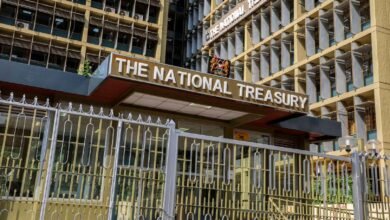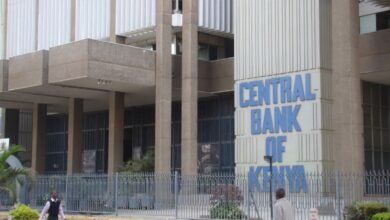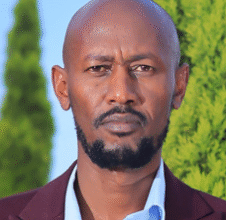
Senegal, a nascent oil and gas producer, intends spending about 12.8 trillion CFA francs ($21 billion) on development over the next five years and aims to garner another 5.7 trillion CFA in private investment, a draft government plan shows.
Public investment in education, energy infrastructure and a range of other projects is seen increasing by an average of 14.7% annually between 2025 and 2029, according to the plan, which was shared by the finance ministry. The document is still a work in progress and could still change, according to a presidency official.
The plan is being formulated by the new administration of President Bassirou Diomaye Faye, who took office in April and has pledged to tackle high levels of poverty and unemployment. It notes that a lack of transparency and bad management of public finances has stymied efforts to uplift Senegal’s 18 million people, that wealth and income disparities between those living in the capital and the countryside have widened and that the country is too highly indebted.
About half of the West African nation’s people who don’t resident in the main cities live below the poverty line, official youth unemployment stood at 22% in 2022 and one fifth of eligible children aren’t in school, official data shows.
The government intends to derive more revenue from its oil, gas, gold and other natural resources going forward, while reducing its reliance on loans under a “prudent, better and more-controlled debt policy,” the plan states. It envisions the country’s debt-to-gross domestic product ratio falling to 61% in 2029, and that the government will rely more heavily on local and regional markets for financing.
Also Read: Senegal’s New Leader Faye Calls for Rethinking Relationship with EU
A recent review showed the debt-to-GDP ratio averaged 76.3% during former President Macky Sall’s last five years in power — higher than the 65.9% his administration had reported.
The budget deficit meanwhile averaged 10.1% of GDP, almost double what had been previously stated, according to the review.
While the plan says that mining contracts and a fiscal framework for the oil and gas industry will be reviewed, it stops short of specifying that the terms will be renegotiated as Faye’s government had previously announced.
Other Key Takeaways:
- The budget deficit will be cut to 3% of GDP from next year and maintained at that level through 2025.
- The average current account deficit is expected to fall 4.1% of GDP over the next five years, from 10.3% recorded between 2014 and 2023, in part due to an increase in oil and gas exports and a gradual decline in food imports.
- Energy subsidies are expected to fall to less than 1% of GDP by 2029, from 4% over the 2020-2023 period, as the increased use of gas to generate electricity helps contain costs and more lower-cost crude oil becomes available for refining.
- The tax-to-GDP ratio is projected to rise to 21.7% from 18% currently.






I love your blog.. very nice colors & theme. Did you create this website yourself? Plz reply back as I’m looking to create my own blog and would like to know wheere u got this from. thanks
Very well written information. It will be useful to everyone who usess it, including me. Keep up the good work – can’r wait to read more posts.
You really make it seem so easy with your presentation but I find this topic to be actually something which I think I would never understand. It seems too complex and very broad for me. I am looking forward for your next post, I will try to get the hang of it!
Hiya, I’m really glad I’ve found this info. Nowadays bloggers publish only about gossips and internet and this is really annoying. A good blog with interesting content, this is what I need. Thanks for keeping this web site, I will be visiting it. Do you do newsletters? Can’t find it.
Good day! This is kind of off topic but I need some help from an established blog. Is it difficult to set up your own blog? I’m not very techincal but I can figure things out pretty quick. I’m thinking about creating my own but I’m not sure where to start. Do you have any tips or suggestions? Thanks
Thank you for every other informative site. The place else could I am getting that kind of info written in such a perfect approach? I’ve a challenge that I’m just now working on, and I’ve been at the look out for such info.
It’s a pity you don’t have a donate button! I’d without a doubt donate to this fantastic blog! I guess for now i’ll settle for book-marking and adding your RSS feed to my Google account. I look forward to brand new updates and will share this website with my Facebook group. Chat soon!
I’ve been exploring for a bit for any high quality articles or blog posts on this sort of area . Exploring in Yahoo I at last stumbled upon this site. Reading this info So i’m happy to convey that I’ve a very good uncanny feeling I discovered just what I needed. I most certainly will make certain to don’t forget this web site and give it a look regularly.
Great V I should certainly pronounce, impressed with your website. I had no trouble navigating through all the tabs as well as related information ended up being truly easy to do to access. I recently found what I hoped for before you know it at all. Quite unusual. Is likely to appreciate it for those who add forums or something, web site theme . a tones way for your customer to communicate. Excellent task..
Your place is valueble for me. Thanks!…
Greetings from Colorado! I’m bored to death at work so I decided to check out your blog on my iphone during lunch break. I really like the knowledge you present here and can’t wait to take a look when I get home. I’m amazed at how quick your blog loaded on my mobile .. I’m not even using WIFI, just 3G .. Anyways, great blog!
With havin so much content do you ever run into any issues of plagorism or copyright infringement? My blog has a lot of completely unique content I’ve either authored myself or outsourced but it appears a lot of it is popping it up all over the web without my permission. Do you know any methods to help stop content from being ripped off? I’d certainly appreciate it.
Whats up! I just would like to give a huge thumbs up for the good info you may have here on this post. I might be coming again to your weblog for more soon.
Hello! I just would like to give a huge thumbs up for the great info you have here on this post. I will be coming back to your blog for more soon.
I have been examinating out many of your articles and i can claim pretty nice stuff. I will surely bookmark your blog.
Hi there, I log on to your new stuff on a regular basis.
Your writing style is awesome, keep up the good work! https://Glassiuk.Wordpress.com/
You are my intake, I possess few web logs and often run out from to brand.
I am incessantly thought about this, thanks for putting up.
Excellent items from you, man. I have take into accout your stuff prior to and you’re simply too excellent. I really like what you have bought right here, certainly like what you’re stating and the way in which wherein you assert it. You make it enjoyable and you still take care of to keep it wise. I cant wait to read far more from you. This is really a tremendous site.
Hello! I simply would like to give an enormous thumbs up for the good info you’ve here on this post. I will likely be coming again to your blog for more soon.
of course like your web site but you need to take a look at the spelling on several of your posts. A number of them are rife with spelling issues and I in finding it very troublesome to tell the truth nevertheless I will definitely come back again.
That is really interesting, You’re a very professional blogger. I’ve joined your rss feed and look ahead to in the hunt for extra of your great post. Also, I’ve shared your site in my social networks!
I really like your writing style, wonderful info , thanks for putting up : D.
Hey would you mind sharing which blog platform you’re working with? I’m planning to start my own blog in the near future but I’m having a difficult time deciding between BlogEngine/Wordpress/B2evolution and Drupal. The reason I ask is because your design seems different then most blogs and I’m looking for something completely unique. P.S My apologies for getting off-topic but I had to ask!
Youre so cool! I dont suppose Ive learn anything like this before. So nice to find anyone with some authentic ideas on this subject. realy thank you for starting this up. this web site is something that is needed on the internet, someone with a little originality. useful job for bringing something new to the internet!
Rattling instructive and fantastic complex body part of articles, now that’s user friendly (:.
I love your blog.. very nice colors & theme. Did you create this website yourself? Plz reply back as I’m looking to create my own blog and would like to know wheere u got this from. thanks
Heya are using WordPress for your site platform? I’m new to the blog world but I’m trying to get started and set up my own. Do you need any html coding knowledge to make your own blog? Any help would be really appreciated!
Thanx for the effort, keep up the good work Great work, I am going to start a small Blog Engine course work using your site I hope you enjoy blogging with the popular BlogEngine.net.Thethoughts you express are really awesome. Hope you will right some more posts.